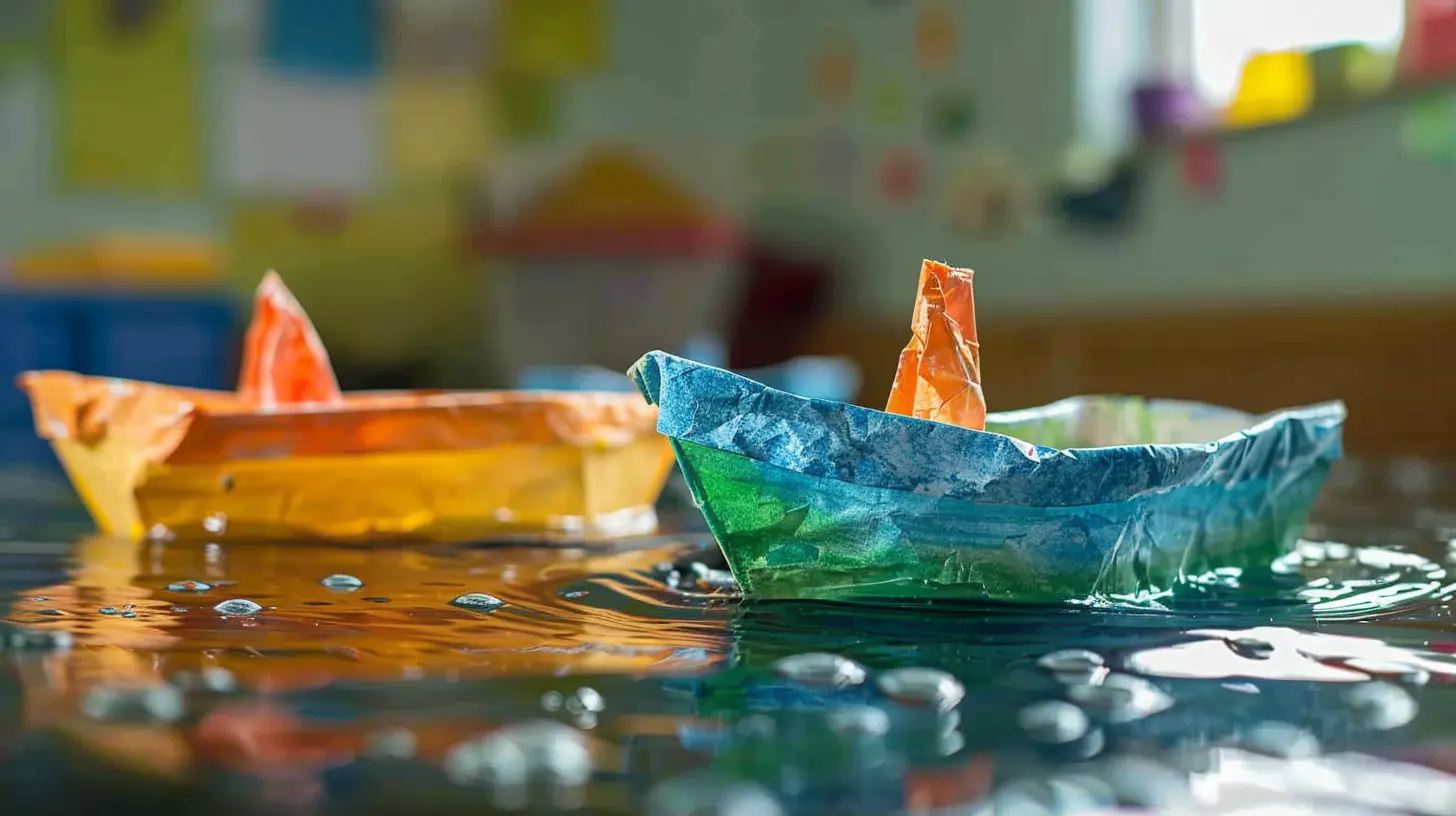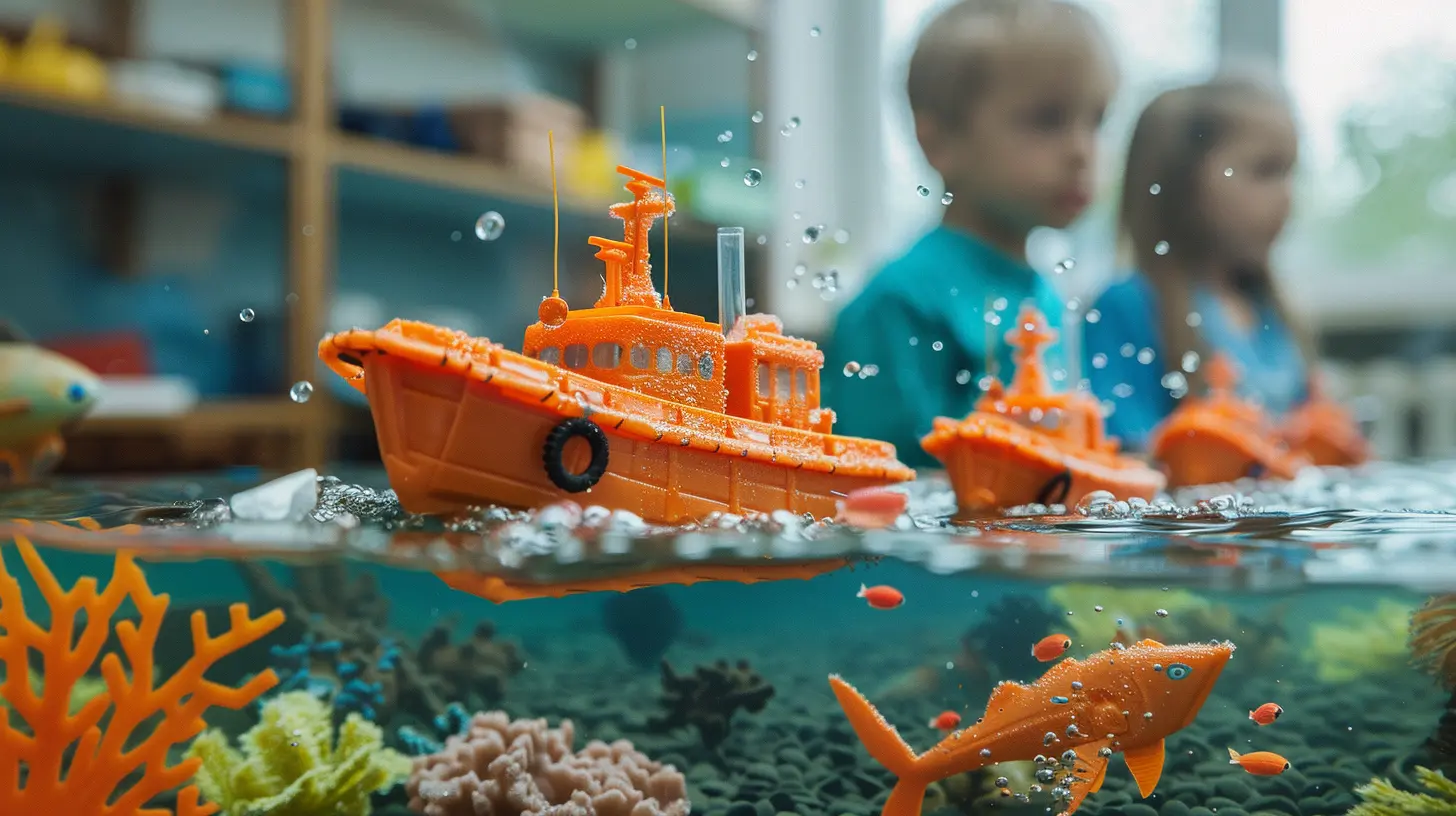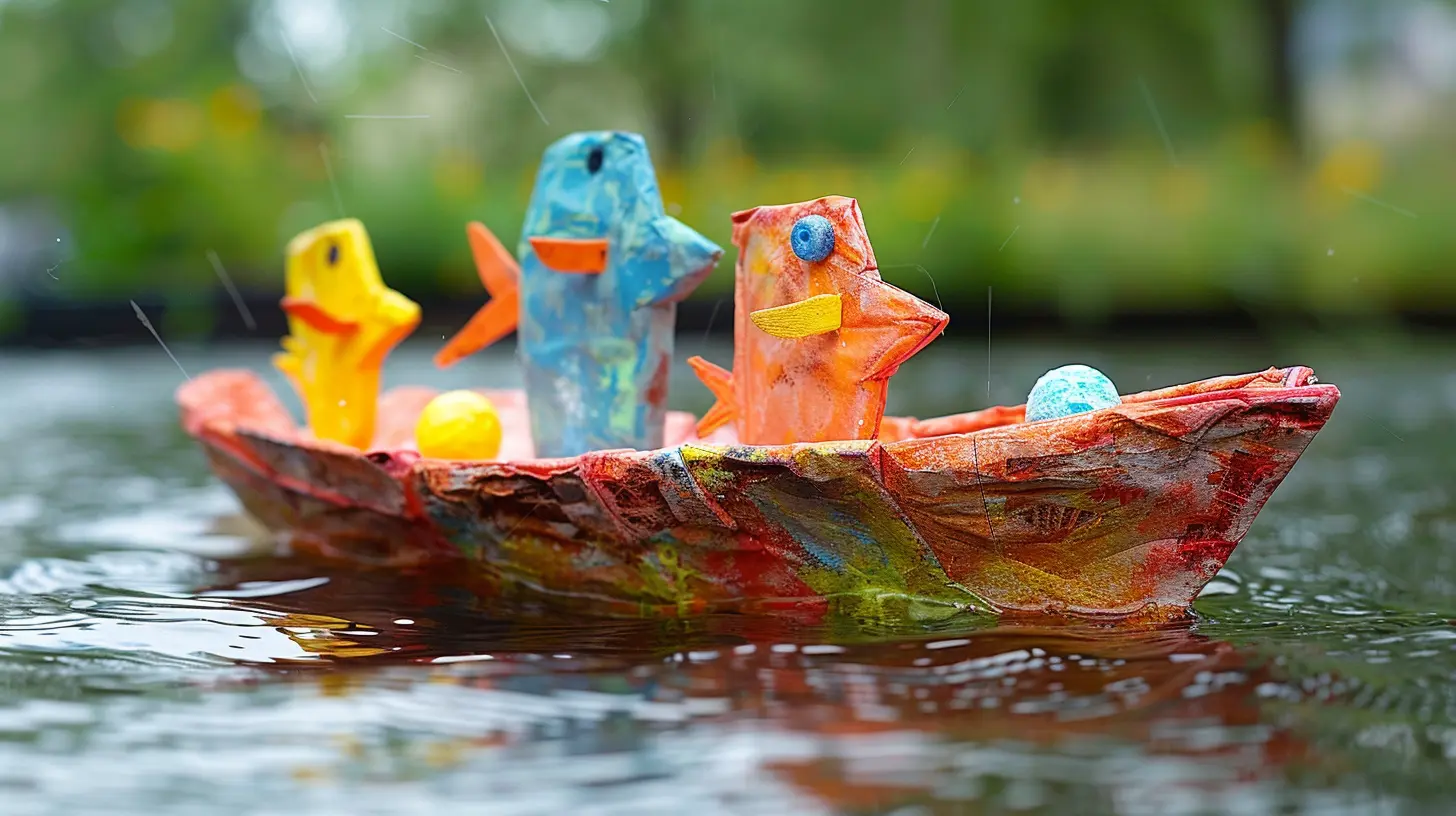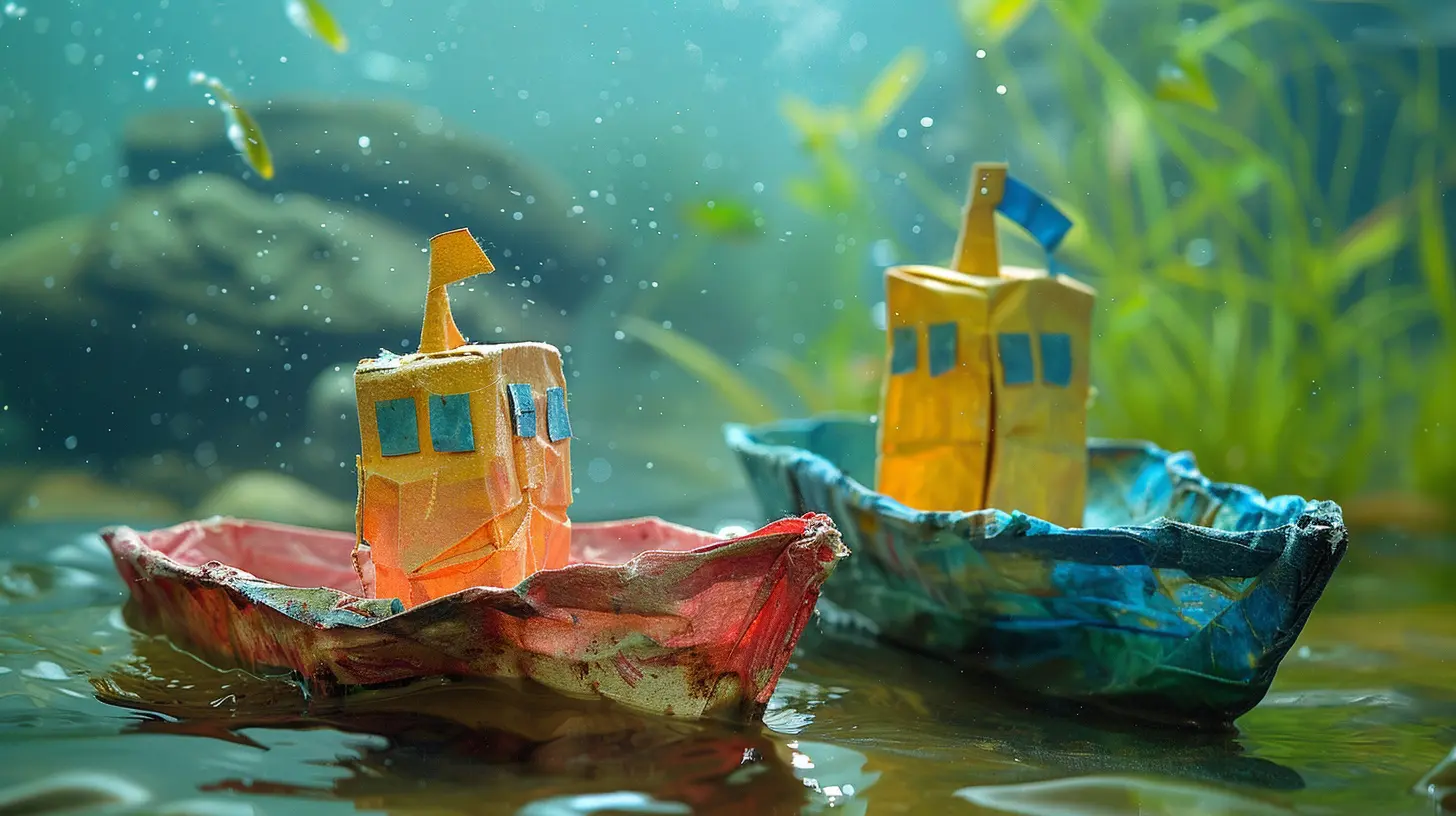Exploring Buoyancy with Homemade Boats and Submarines
10 October 2025
Have you ever watched a boat floating on water and wondered, "Why doesn’t it sink?" Or maybe you've seen a submarine dive beneath the waves and thought, "How does it come back up?" These fascinating phenomena all boil down to one fundamental principle of physics—buoyancy.
Today, we're going to have some fun with science by creating our own homemade boats and submarines! Whether you're a curious student, an educator looking for a hands-on lesson, or just someone who loves DIY projects, this guide will make learning about buoyancy exciting and interactive.
Let’s dive in (pun intended!) and see how we can bring buoyancy to life with simple household materials. 
What Is Buoyancy?
Before we start building, let’s get a basic understanding of buoyancy. In simple terms, buoyancy is the upward force that allows objects to float in a fluid (such as water or air).This force is described by Archimedes' Principle, which states:
> "An object submerged in a fluid experiences an upward force equal to the weight of the fluid it displaces."
So, if an object pushes aside more water than it weighs, it floats. If it pushes aside less, it sinks. That’s why gigantic ships made of heavy steel can stay afloat, while a small solid metal ball sinks like a rock.
Why Do Some Things Float While Others Sink?
The secret to floating or sinking lies in two key things:✅ Density – If an object is denser than water, it'll sink. If it's less dense, it'll float.
✅ Displacement – If an object can push away enough water to support its weight, it'll stay above the surface.
Now that we’ve covered the basics, let’s put this knowledge into action! 
DIY Homemade Boats: Let’s Set Sail!
Building a homemade boat is a great way to explore buoyancy in action. Here’s a simple project that works for kids and adults alike.Materials Needed:
- Aluminum foil- Plastic bottles or caps
- Straws
- Tape or glue
- Scissors
- Small coins or marbles (for weight testing)
- A large bowl or bathtub filled with water
Step-by-Step Instructions:
1. Create the Base of Your Boat
Take a piece of aluminum foil and shape it into a boat. It can be flat like a raft or curved like a canoe. Make sure the edges are slightly folded up so it can hold weight without water getting in.2. Add a Hull for Stability
To make the boat more stable, attach plastic bottles or caps to the bottom using tape or glue. These work like air pockets, adding extra buoyancy.3. Design a Sail (Optional)
For some extra fun, attach a straw as a mast and glue a small piece of paper as a sail. This won’t affect buoyancy much, but it makes the experiment more interesting.4. Buoyancy Test
Place your boat in water. Does it float? Great! Now start placing small coins or marbles inside to see how much weight it can hold before sinking.5. Experiment with Different Designs
Try making boats with different materials or shapes. Which design holds the most weight? Which sinks the fastest?✅ Science Behind It: The more surface area your boat has, the more water it displaces, making it float longer. Adding hollow parts (like plastic bottles) increases buoyancy, just like real-life ships! 
DIY Homemade Submarine: Going Underwater!
Now that we understand floating, let’s take it a step further and build a homemade submarine! Unlike boats, submarines can control their buoyancy, allowing them to sink and rise on command.Materials Needed:
- A plastic water bottle- A few metal washers or small stones (for weight)
- A straw
- A balloon
- Tape or rubber bands
- A large container filled with water
Step-by-Step Instructions:
1. Preparing the "Submarine" Body
Take an empty plastic bottle and make sure it’s well sealed with its cap.2. Adding Weight to Sink the Submarine
Attach a few metal washers or small stones to the bottom of the bottle using tape or rubber bands. This adds weight, making it easier to sink.3. Creating a Buoyancy Control System
Insert a deflated balloon inside the bottle's opening, leaving the mouth of the balloon hanging outside the bottle. Seal it tightly with the bottle cap but ensure air can still enter the balloon.4. Testing the Submarine in Water
Place your submarine in the water and see what happens. Initially, it should be slightly neutrally buoyant (neither floating nor sinking too fast).5. Managing Buoyancy
Now, blow air into the balloon using a straw. As the balloon inflates, your submarine should rise. When you let the air out, it should sink again.✅ Science Behind It: When you blow air into the balloon, you make the submarine less dense, so it rises. When the air escapes, it becomes denser, and the weight pulls it down—just like real submarines adjusting their depth! 
The Real-World Connection: How Submarines Work
Submarines don’t just rely on balloons, of course! Instead, they have tanks called ballast tanks.- When they fill these tanks with water, they become heavier and sink.
- When they pump the water out and replace it with air, they become lighter and rise.
This is the same principle you just tested with your homemade submarine! Cool, right?
Fun Challenges & Further Experiments
Want to take these experiments to the next level? Try these fun challenges:🔥 Challenge 1: The Strongest Boat – Build different types of boats and see which one can hold the most weight before sinking.
🌊 Challenge 2: The Fastest Submarine – Modify your submarine to make it go up and down as quickly as possible.
🚢 Challenge 3: Floating Heavy Objects – Find a way to make a heavy object (like a rock) float. Hint: Think about displacement!
These challenges will push your creativity and help you develop a deeper understanding of buoyancy.
Final Thoughts: Buoyancy in Action!
Buoyancy isn’t just something for scientists or shipbuilders—it’s a principle that plays a role in so many parts of our daily lives. From boats and submarines to even the way our bodies float in a swimming pool, it's all about density and displacement.By making these homemade boats and submarines, you're not just learning a cool science concept—you’re experiencing it firsthand in a fun and engaging way.
So go ahead, build, test, and explore the magic of buoyancy! Who knows? Maybe you'll be inspired to become an engineer, scientist, or even a submarine captain someday.
all images in this post were generated using AI tools
Category:
Science ExperimentsAuthor:

Bethany Hudson
Discussion
rate this article
1 comments
Noah Vasquez
Dive into the wonders of buoyancy! Building homemade boats and submarines is not just about science; it’s a journey of creativity and problem-solving. Embrace the challenge, explore the depths of your imagination, and let each experiment teach you something new! Keep experimenting!
October 19, 2025 at 4:14 AM

Bethany Hudson
Thank you for your inspiring comment! Embracing creativity and problem-solving truly enhances the journey of exploring buoyancy. Happy experimenting!


